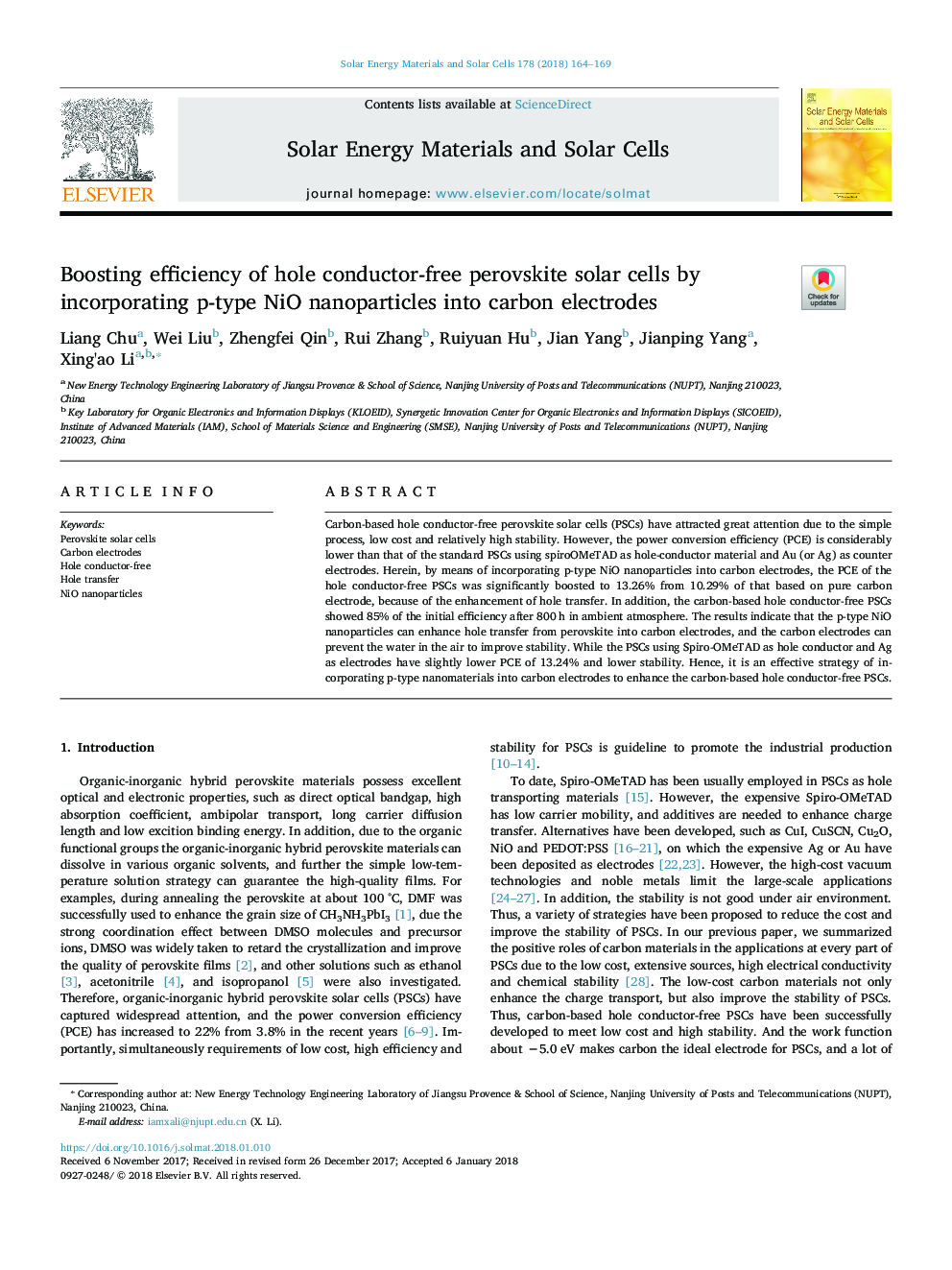| Article ID | Journal | Published Year | Pages | File Type |
|---|---|---|---|---|
| 6534360 | Solar Energy Materials and Solar Cells | 2018 | 6 Pages |
Abstract
Carbon-based hole conductor-free perovskite solar cells (PSCs) have attracted great attention due to the simple process, low cost and relatively high stability. However, the power conversion efficiency (PCE) is considerably lower than that of the standard PSCs using spiroOMeTAD as hole-conductor material and Au (or Ag) as counter electrodes. Herein, by means of incorporating p-type NiO nanoparticles into carbon electrodes, the PCE of the hole conductor-free PSCs was significantly boosted to 13.26% from 10.29% of that based on pure carbon electrode, because of the enhancement of hole transfer. In addition, the carbon-based hole conductor-free PSCs showed 85% of the initial efficiency after 800Â h in ambient atmosphere. The results indicate that the p-type NiO nanoparticles can enhance hole transfer from perovskite into carbon electrodes, and the carbon electrodes can prevent the water in the air to improve stability. While the PSCs using Spiro-OMeTAD as hole conductor and Ag as electrodes have slightly lower PCE of 13.24% and lower stability. Hence, it is an effective strategy of incorporating p-type nanomaterials into carbon electrodes to enhance the carbon-based hole conductor-free PSCs.
Related Topics
Physical Sciences and Engineering
Chemical Engineering
Catalysis
Authors
Liang Chu, Wei Liu, Zhengfei Qin, Rui Zhang, Ruiyuan Hu, Jian Yang, Jianping Yang, Xing'ao Li,
